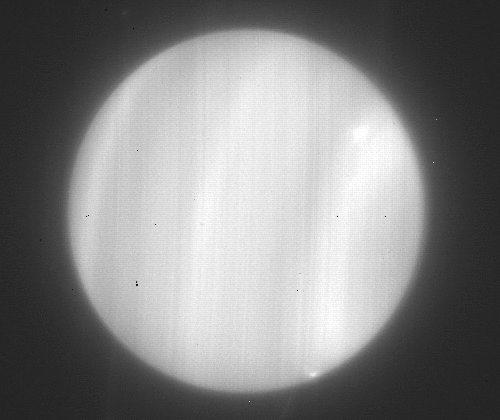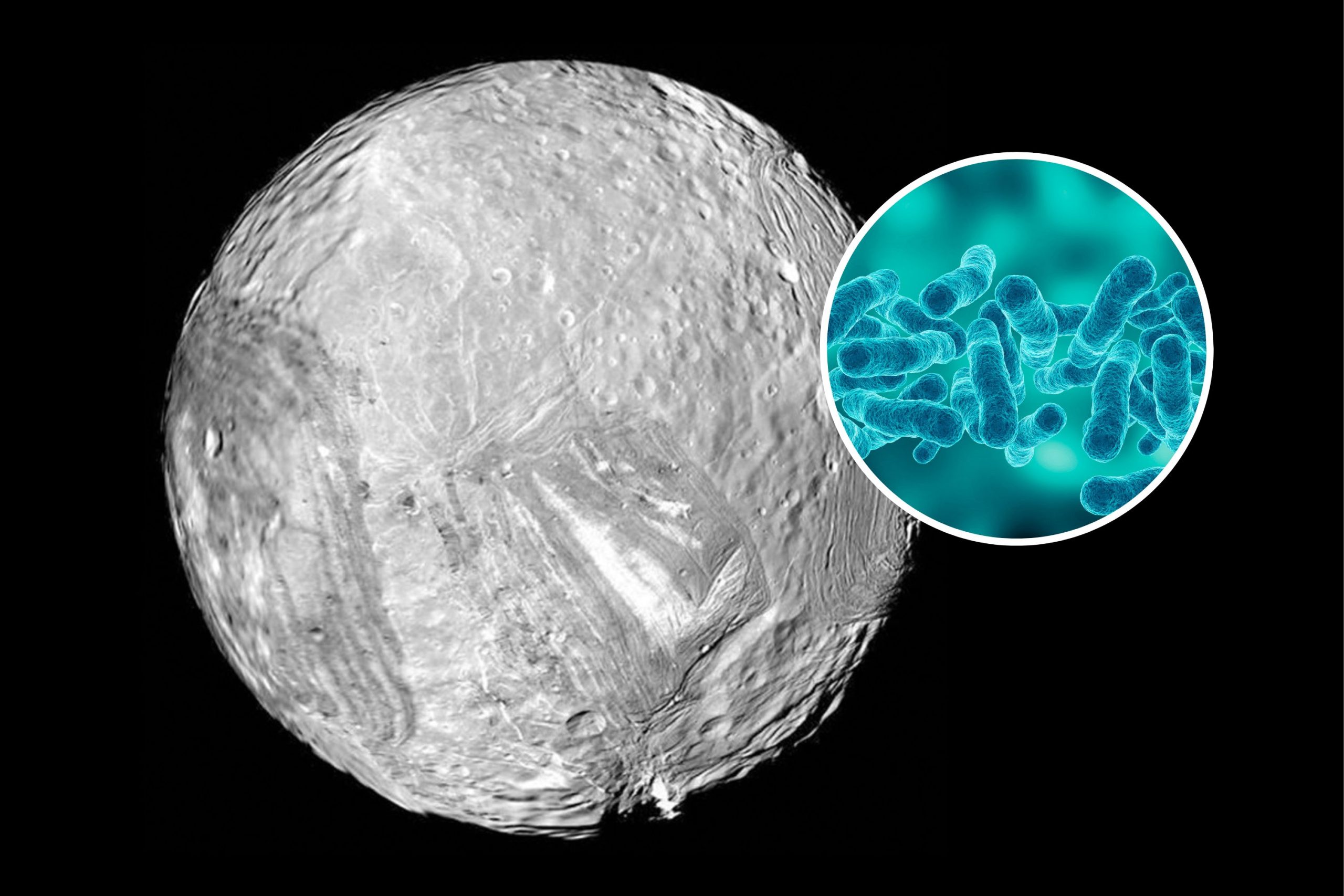Key Takeaways:
- Miranda, one of Uranus’s moons, may have a hidden ocean beneath its icy crust.
- The discovery of water on Miranda could mean conditions are favorable for life.
- Scientists used Voyager 2 images and computer modeling to study Miranda’s unique geology.
- Gravitational forces from neighboring moons might keep Miranda’s ocean warm enough to stay liquid.
- Future missions could confirm whether Miranda holds a liquid ocean and assess its potential for life.
___________________
Miranda’s hidden ocean may be up to 62 miles deep, just under a 19-mile-thick icy crust.

Miranda: A Hidden Ocean on Uranus’s Mysterious Moon?
A recent study offers an exciting glimpse into the icy depths of Uranus’s moon Miranda, suggesting it could hold a hidden ocean beneath its frozen crust. This discovery has ignited discussions about the potential for extraterrestrial life in the outer solar system. Spearheaded by Tom Nordheim, a planetary scientist at the Johns Hopkins Applied Physics Laboratory, the research marks a surprising development for a relatively small moon orbiting one of the farthest planets from Earth.
Miranda’s geology has intrigued scientists since NASA’s Voyager 2 spacecraft captured close-up images in 1986, revealing a patchwork surface with deep grooves, towering cliffs, and unusual trapezoidal regions called coronae. Researchers initially puzzled over how Miranda’s diverse landscape came to be. But these surface features could be the result of internal processes caused by the presence of a subsurface ocean, a possibility that recent computer modeling supports.
Uncovering Evidence of a Hidden Ocean
To delve into Miranda’s structure, a research team led by Nordheim, alongside Caleb Strom from the University of North Dakota and Alex Patthoff of the Planetary Science Institute, used a combination of Voyager 2 imagery and modern computer simulations. By examining Miranda’s surface features and modeling its possible internal structure, they found evidence of a liquid ocean beneath the moon’s icy shell. The data indicates that Miranda’s ocean may be as deep as 62 miles, capped by a crust around 19 miles thick. This finding is a big leap forward in understanding the moon’s geology and the potential for life-supporting environments beyond Earth.
Miranda’s ocean, if confirmed, may have remained liquid due to gravitational forces, or “tidal forces,” exerted by Uranus’s neighboring moons. As these moons pull on each other, the gravitational interactions create friction, generating heat that could prevent the ocean from freezing. This phenomenon, known as orbital resonance, has been observed in other moons with subsurface oceans, such as Saturn’s Enceladus, which famously vents water into space.

Potential for Life Beyond Earth
While Miranda’s subsurface ocean suggests an exciting possibility, there is no conclusive proof yet that the ocean exists. According to Strom, the absence of certain surface features suggests Miranda’s interior might not have completely frozen. If confirmed, this would make Miranda one of the most distant locations in the solar system with a liquid ocean, heightening interest in its potential to support life. However, more research and perhaps a future mission to Uranus are necessary to confirm these findings.
The discovery of a possible ocean on Miranda adds to a growing list of icy moons where scientists speculate life might exist. In 2004, Saturn’s moon Enceladus surprised scientists when it showed geysers ejecting water vapor and ice, pointing to a hidden ocean beneath its crust. Similar oceans have been theorized on Jupiter’s moon Europa and now, potentially, on Miranda. For scientists, exploring these ocean worlds offers a promising avenue in the search for extraterrestrial life.
As we continue to uncover the secrets of our solar system, Miranda stands as a remarkable candidate for future exploration. This small moon, orbiting a tilted and mysterious planet, may hold clues that could reshape our understanding of where life might be found. With new missions and advanced technology, humanity could soon be able to delve deeper into Miranda’s icy crust and assess its potential as a host for life.
The full study was published in The Planetary Science Journal.





It would be very interesting to confirm that even in our solar system there’re multiple Moons like Miranda and Europa that have ocean and life. If that’s the case, it basically proves the strong correlation between having a global ocean and life, also that in many astronomical objects they’re hidden beneath the surface. Makes you wonder if the universe is basically teeming with life.
In a practically infinite universe, the chance that we are the only life that exists is practically 0.
There HAS to be life somewhere else in the universe, it’s practically guaranteed. We just dont know where it is.
Don’t Europa and Triton probably have subsurface oceans too?
I mean yay but as I understand it there are a few moons already likely candidates
I’m wondering. Are these ocean moons actually way more common than we think? And if there’s a recipe… is life (in whatever way is possible there) actually common in the universe?
Is it possible it has a hot core keeping the water liquid?